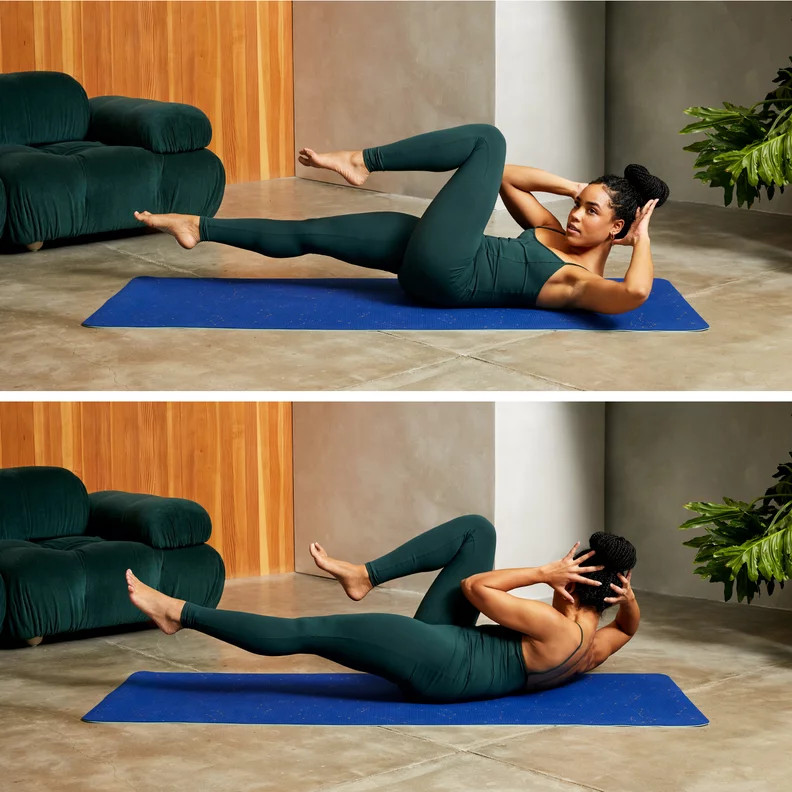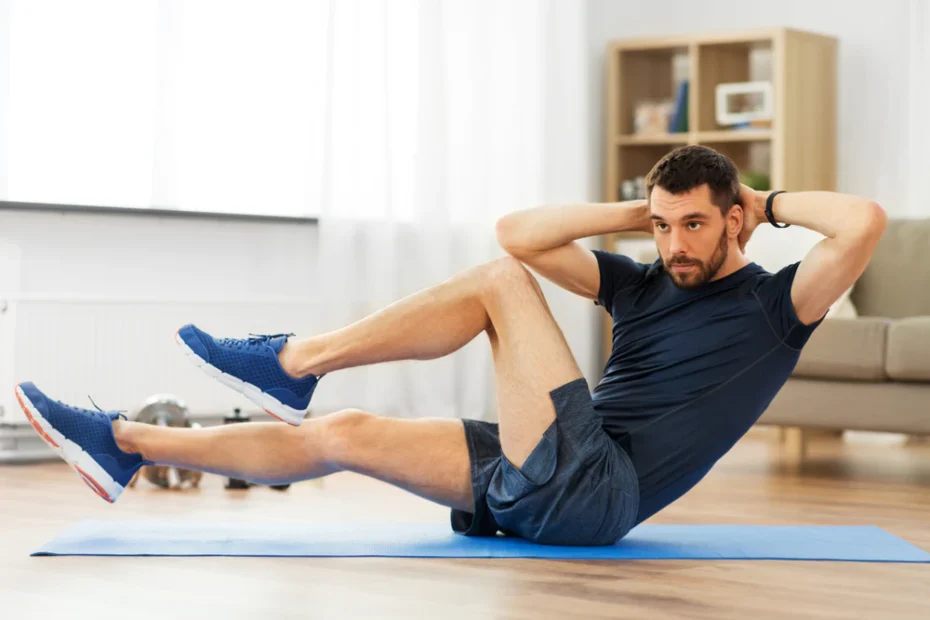Bicycle crunches are a versatile and challenging core exercise that effectively engages multiple muscle groups in your abdomen. In this comprehensive guide, we’ll explore how to perform bicycle crunches correctly, the muscles worked, the benefits they offer, common mistakes to avoid, and variations & alternatives to elevate your core training.
Muscles Worked
Primary Muscles Targeted:
- Rectus Abdominis (Front of your abdomen)
- Obliques (Muscles on the sides of your torso)
Secondary Muscles Engaged:
- Transverse Abdominis (Deep core stabilizing muscles)
How to Do Bicycle Crunches
Follow these steps to perform bicycle crunches correctly:

- Starting Position: Lie on your back with your hands lightly supporting your head, elbows pointing out to the sides. Lift your legs off the ground, bending your knees at a 90-degree angle.
- Crunching Motion: Engage your core muscles and lift your head, neck, and shoulders off the ground, bringing your right elbow towards your left knee. Simultaneously, straighten your right leg, keeping it a few inches off the ground.
- Twisting Motion: Rotate your torso to the right, bringing your left elbow towards your right knee while extending your left leg.
- Pedaling Motion: Continue to alternate sides in a pedaling motion, like riding a bicycle. As you do so, make sure to fully extend the leg you’re moving and keep the other one bent.
- Breathing: Exhale as you crunch and twist, inhale as you extend your legs. Maintain steady and controlled breathing throughout.
- Repetition: Perform the movement for a specific number of repetitions or a set duration.
Benefits of Bicycle Crunches
Bicycle crunches offer several benefits for your core and overall fitness:
- Comprehensive Core Engagement: This exercise targets both the rectus abdominis and oblique muscles, providing a complete core workout.
- Oblique Strengthening: The twisting motion engages the obliques, helping you develop a strong and defined waistline.
- Caloric Expenditure: Bicycle crunches are dynamic and burn calories, contributing to overall weight management.
- Enhanced Flexibility: The exercise promotes flexibility in the spine, improving range of motion.
- Core Stability: Strengthening your core contributes to better posture and reduced risk of back pain.
Common Mistakes to Avoid
To maximize the effectiveness of bicycle crunches and minimize the risk of injury, steer clear of these common mistakes:
- Jerky Movements: Perform the exercise in a controlled and fluid manner, avoiding jerky or fast movements.
- Neck Strain: Support your head with your hands, but don’t pull on your neck. Your abs should do the work, not your neck.
- Incomplete Range of Motion: Fully extend the legs and twist the torso to ensure you engage all the target muscles.
- Holding Your Breath: Breathe steadily throughout the exercise to prevent muscle tension and fatigue.
Variations & Alternatives
Variations:
- Weighted Bicycle Crunches: Hold a dumbbell or weight plate while performing the exercise to increase resistance.
- Standing Bicycle Crunches: Perform the motion while standing to engage your core from a different angle.
- Slow-Motion Bicycle Crunches: Perform the exercise at a slower pace, emphasizing muscle control and stability.
Alternative Core Exercises:
- Plank: Engage your entire core by holding a plank position on your elbows and toes.
- Russian Twists: Improve rotational strength and work your obliques with this seated twisting exercise.
- Leg Raises: Strengthen your lower abdominal muscles by lifting your legs while lying on your back.
- Side Planks: Target your oblique muscles while stabilizing your core from a side-lying position.
Incorporate bicycle crunches and other core exercises into your fitness routine to develop a strong and stable core, support your overall fitness goals, and enjoy the benefits of a well-conditioned midsection.
